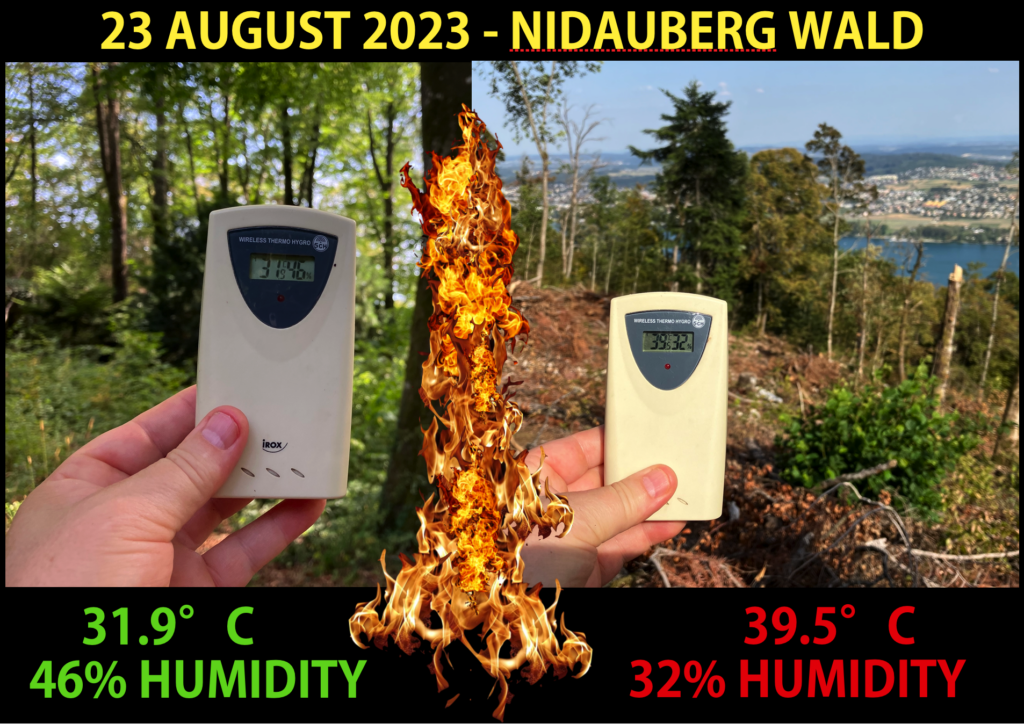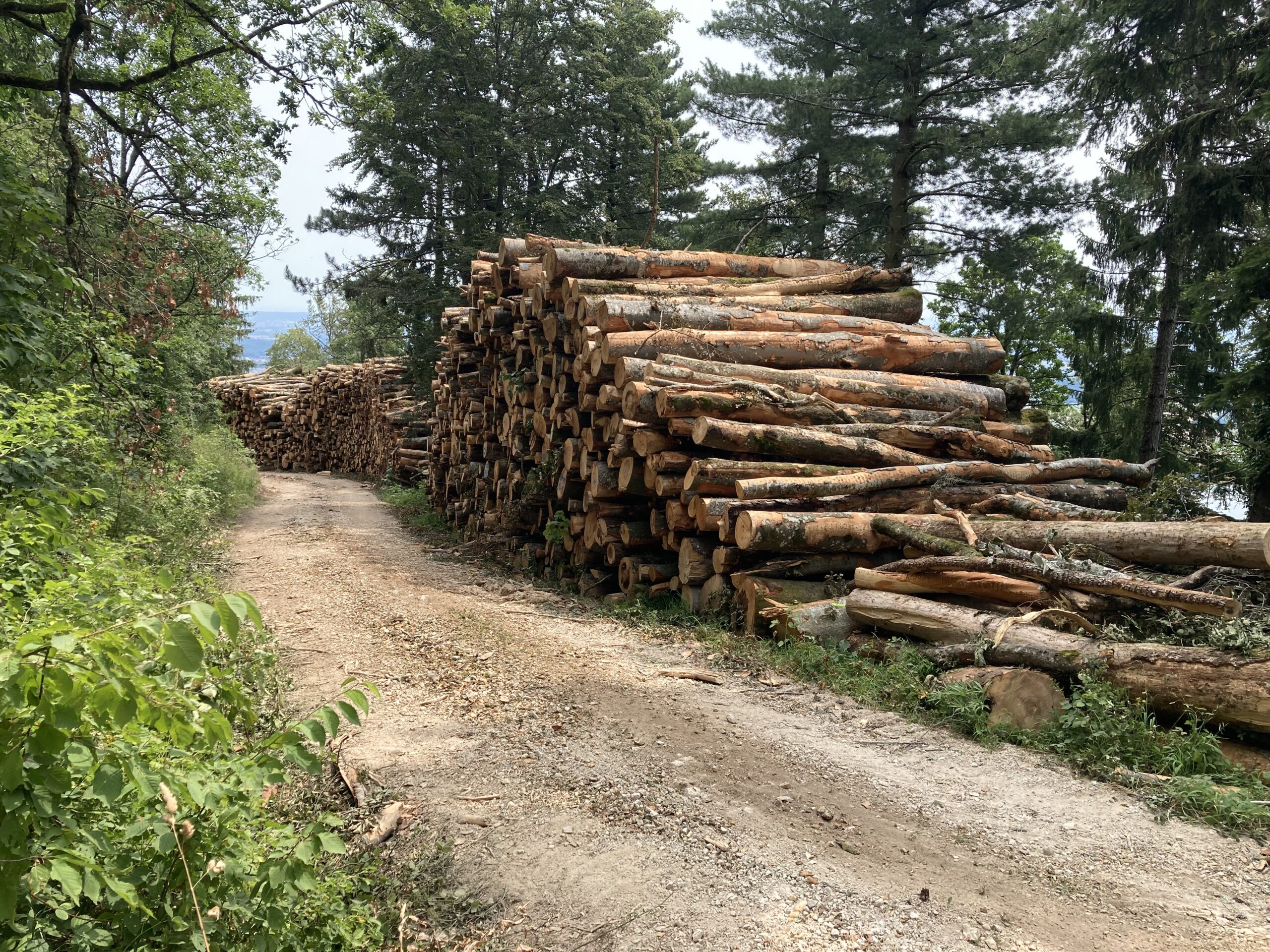Making forests thinner endangers our health
The need to “let in light” is one of the most commonly quoted excuses for logging. Our forests have become “too dark” and this is having an impact on specialist “light-loving species”. To remedy this, the government put in place an action plan (Plan d’action Forêts claires) which concluded in 2020.
It is of course true that some plants and animals (see biodiversity) can only thrive in light, open forests and that targeted silvicultural interventions can therefore benefit such species and should be encouraged.
However, this excuse has been hijacked and forests are being logged to “let in light” all over Switzerland. But the more we log, the more the forest canopy will decrease, the more heat will be let in (as well as wind resulting in windthrow and windsnap), the more pressure will be put on species and natural networks which are not used to such sudden heat (which also favours disease and wood boring insects), and the more dieback and damage will occur and the weaker the forest will become.
This is the conclusion of a review of 3,000 forests sites across Europe for over 80 years.
The truth is that we really shouldn’t be making forests thinner when the world is getting hotter.
Because increased heat from logging doesn’t just damage the remaining trees and forest ecosystems, it also poses a danger to humans (find out how).
This forest in the Nidauberg Wald, close to Bienne was logged to “let in light”, to benefit “light-loving” species.
With the tree canopy reduced to just 20% in some places, the daytime summer temperature spiked.
The differences in temperature and humidity between the logged area and the intact forest are stark. Where would you prefer to hike or picnic on a hot day?

Even worse, over 70% of the extracted timber was burnt. (Photo on top: Woody biomass from the forest of the Nidauberg)
Not only were trees that provided shade and were capturing CO2 removed, but the carbon they contained was released into the atmosphere to continue fuelling climate change.
Why don’t you try this heat experiment in your forest?
You will need a thermometer and a ski pole (or similar stick) to keep your thermometer above the ground (1.2 m is ideal). Then wait for a hot day and deploy your thermometer in the shade of the forest and exposed to the heat of a clearcut or city, leaving it each time for 20 minutes before you take a reading.
You can send us your results (your story). We would love to hear from you.
August 2025
